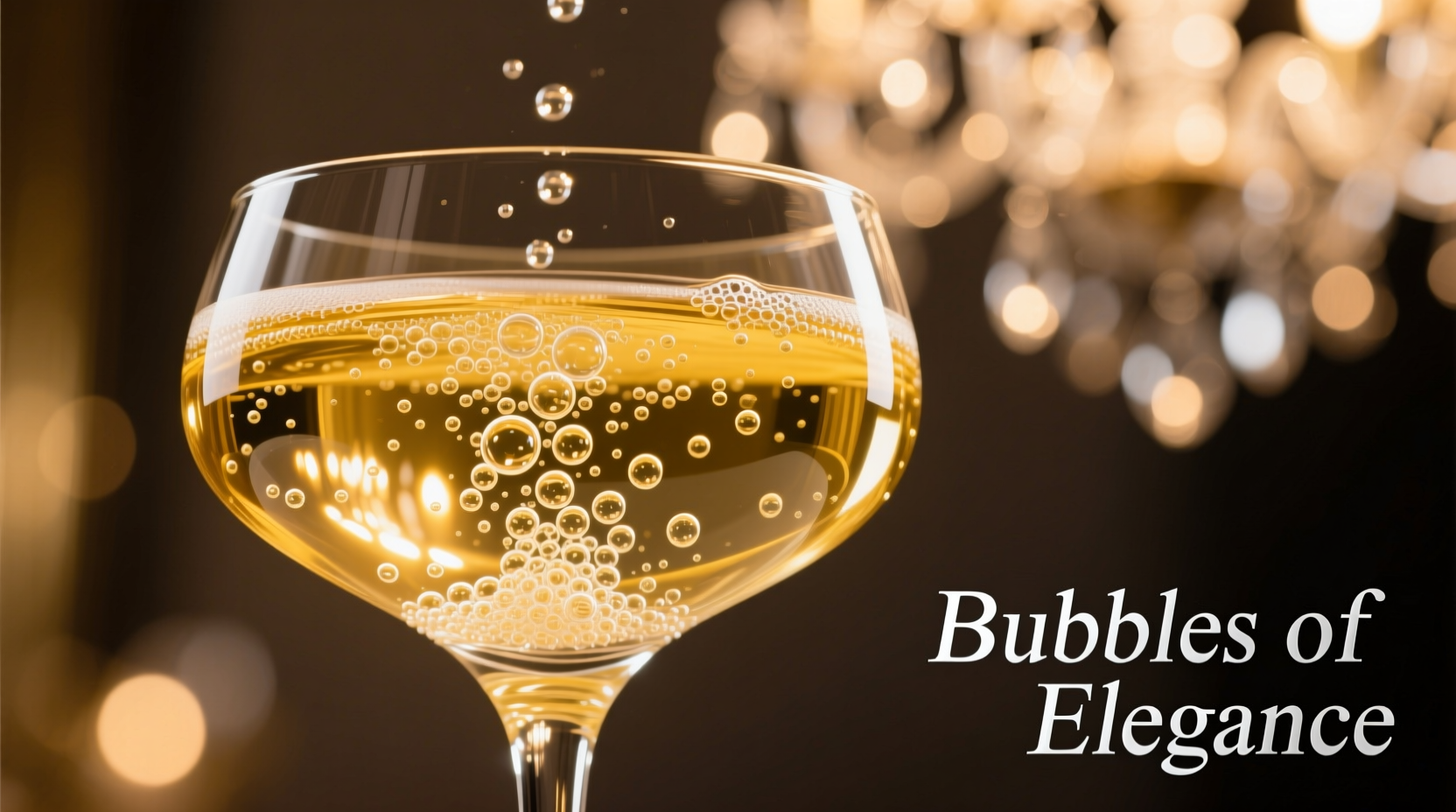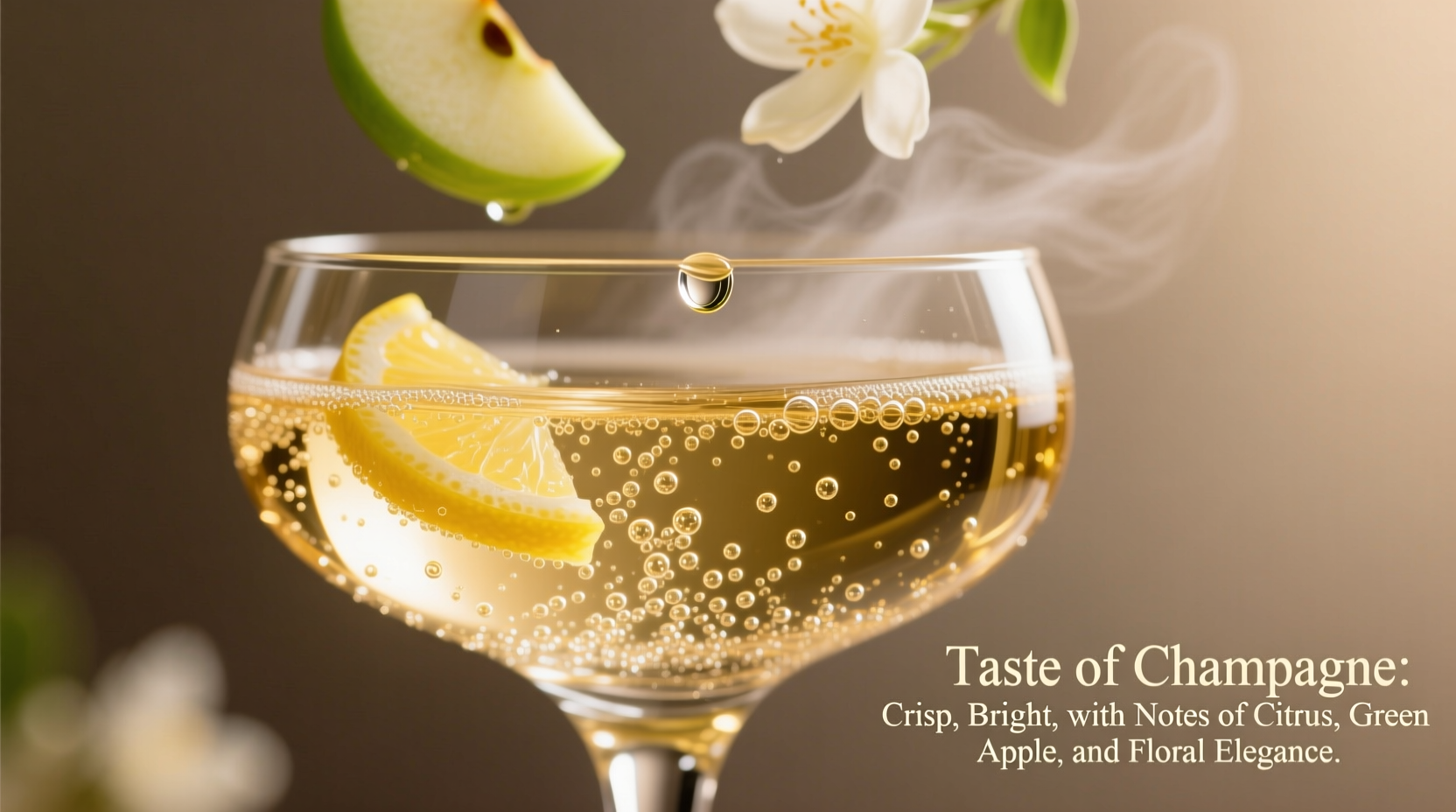The Complete Champagne Taste Experience: Beyond Just Bubbles
When you take your first sip of authentic Champagne, you're experiencing a complex interplay of flavors shaped by centuries of tradition and meticulous craftsmanship. Unlike ordinary sparkling wines, true Champagne offers a distinctive sensory profile that evolves as it touches your palate.Deconstructing Champagne's Flavor Profile
Understanding what champagne tastes like requires breaking down its multi-layered sensory experience:
Bubble Structure and Texture
The finest Champagnes feature microscopic, persistent bubbles that create a silky mouthfeel rather than an aggressive fizz. This delicate effervescence carries aromas to your nose while providing a gentle tingling sensation on the palate. The quality of bubbles directly correlates with production methods—traditional méthode champenoise yields finer, longer-lasting bubbles than tank method sparkling wines.

Acidity: The Backbone of Flavor
Champagne's signature crisp acidity (typically between 6-9 g/L tartaric acid) provides structure and freshness. This bright acidity balances the wine's natural fruitiness and any residual sugar, creating that refreshing quality Champagne is known for. The chalky soils of the Champagne region contribute to this distinctive acidity profile, as documented by the Comité Champagne.
Primary Flavor Notes
Most Champagnes showcase vibrant citrus elements (lemon zest, grapefruit, sometimes orange blossom) alongside green apple, pear, and white peach notes. These primary fruit flavors come directly from the grapes—primarily Chardonnay, Pinot Noir, and Pinot Meunier grown in the cool northern French climate.
How Production Shapes Champagne's Taste
Several key factors determine what champagne tastes like, distinguishing it from other sparkling wines:
| Champagne Style | Sugar Level (g/L) | Primary Taste Characteristics |
|---|---|---|
| Brut Nature | 0-3 | Sharpest acidity, pronounced citrus, mineral-driven, bone-dry |
| Extra Brut | 0-6 | Very dry, focused fruit, pronounced structure |
| Brut | 0-12 | Most common style, balanced fruit-acidity, subtle sweetness |
| Demi-Sec | 32-50 | Noticeably sweet, baked apple, honey notes |
The Magic of Lees Aging
The distinctive brioche, almond, and nutty notes that characterize quality Champagne develop during extended contact with yeast sediment (lees). According to EU regulations, non-vintage Champagne must age on lees for minimum 15 months, while vintage Champagne requires at least 3 years. Premium houses often exceed these requirements, with some Champagnes aging 5-10 years on lees. This process, called sur lie, creates complex secondary flavors that define authentic Champagne's taste profile.
Grape Variety Influence
The three permitted grape varieties each contribute distinct elements:
- Chardonnay (white grape): Adds citrus notes, freshness, and elegance
- Pinot Noir (red grape, used white): Provides structure, red fruit notes, and body
- Pinot Meunier (red grape, used white): Contributes floral notes and approachability
Champagne vs. Other Sparkling Wines: A Taste Comparison
While all sparkling wines share effervescence, Champagne's taste profile differs significantly from other sparkling wines due to terroir and production methods:
Temperature's Critical Role
Champagne's taste changes dramatically based on serving temperature—a crucial context boundary often overlooked. The Oregon State University Extension Service confirms that serving Champagne too cold (below 6°C/43°F) numbs delicate flavors, while serving too warm (above 12°C/54°F) emphasizes alcohol and reduces perceived freshness. The ideal temperature range (8-10°C/46-50°F) allows the complete flavor profile to express itself.
How to Taste Champagne Properly
To fully experience what champagne tastes like, follow this professional tasting sequence:
- Observe: Hold against white background to assess color (pale straw to light gold) and bubble stream
- Swirl gently: Releases aromatic compounds without losing bubbles
- Nose first: Identify primary fruit notes before secondary characteristics
- Sip deliberately: Let wine coat entire palate to assess texture and flavor evolution
- Consider the finish: Premium Champagne lingers 15+ seconds with evolving flavors
Common Taste Misconceptions
Several myths persist about Champagne's taste:
- "All Champagne tastes the same" – Reality: Significant variation exists between houses, vintages, and styles
- "Sweetness defines quality" – Reality: Most quality Champagne is Brut (dry), with sugar added only to balance acidity
- "Bubbles should tickle your nose" – Reality: Fine bubbles create subtle texture, not aggressive fizz
Practical Pairing Guidance
Understanding what champagne tastes like helps with perfect food pairings:
- Brut Champagne: Oysters, sushi, light seafood, goat cheese
- Blanc de Blancs (100% Chardonnay): Poached fish, asparagus, creamy pasta
- Rosé Champagne: Duck breast, salmon, berry desserts
- Rich Vintage Champagne: Roasted poultry, truffle dishes, mushroom risotto
Evolution of Champagne Tasting Techniques
Professional Champagne evaluation has evolved significantly:
- 1800s: Tasted primarily for sweetness level and bubble quality
- Early 1900s: Introduction of standardized tasting glasses
- 1950s: Development of formal sensory analysis methods
- 1980s: Scientific understanding of how lees aging creates complex flavors
- Today: Multi-sensory evaluation considering visual, aromatic, and textural elements











 浙公网安备
33010002000092号
浙公网安备
33010002000092号 浙B2-20120091-4
浙B2-20120091-4